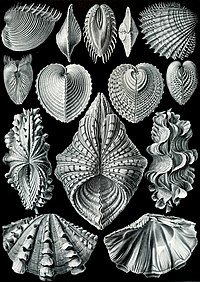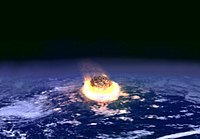
The evolution of the Kuroshio Current over the last 5 million years since the Pliocene: Evidence from planktonic foraminiferal faunas
Sign Up to like & getrecommendations! Published in 2020 at "Science China Earth Sciences"
DOI: 10.1007/s11430-019-9641-9
Abstract: Meridional heat transport of the western Pacific boundary current (the Kuroshio Current) is one of the key factors in global climate change. This current is important because it controls the temperature gradient between low latitudes… read more here.
Keywords: since pliocene; water; pacific; planktonic foraminiferal ... See more keywords

Cretaceous sea-surface temperature evolution: Constraints from TEX86 and planktonic foraminiferal oxygen isotopes
Sign Up to like & getrecommendations! Published in 2017 at "Earth-Science Reviews"
DOI: 10.1016/j.earscirev.2017.07.012
Abstract: It is well established that greenhouse conditions prevailed during the Cretaceous Period (~ 145–66 Ma). Determining the exact nature of the greenhouse-gas forcing, climatic warming and climate sensitivity remains, however, an active topic of research.… read more here.
Keywords: tex86; temperature; surface; cretaceous sea ... See more keywords

Late Pleistocene-Holocene variability in the southern Gulf of Mexico surface waters based on planktonic foraminiferal assemblages
Sign Up to like & getrecommendations! Published in 2017 at "Marine Micropaleontology"
DOI: 10.1016/j.marmicro.2017.04.001
Abstract: Abstract Planktonic foraminiferal assemblages are used as proxies of surface ocean variations, as documented in five marine sediment cores from the Bay of Campeche (BoC), Gulf of Mexico (GoM), spanning the last 34,000 cal yrs BP. This… read more here.
Keywords: foraminiferal assemblages; holocene; planktonic foraminiferal; gulf mexico ... See more keywords

Revisiting reconstructed Indian monsoon rainfall variations during the last ∼25 ka from planktonic foraminiferal δ18O from the Eastern Arabian Sea
Sign Up to like & getrecommendations! Published in 2017 at "Quaternary International"
DOI: 10.1016/j.quaint.2016.07.012
Abstract: Abstract A careful reanalysis of recently published large body of surface seawater salinity and δ 18 O data indicates that the variations in the surface seawater δ 18 O of the Eastern Arabian Sea appear… read more here.
Keywords: south asian; arabian sea; planktonic foraminiferal; monsoon ... See more keywords

Endless Forams: >34,000 Modern Planktonic Foraminiferal Images for Taxonomic Training and Automated Species Recognition Using Convolutional Neural Networks
Sign Up to like & getrecommendations! Published in 2019 at "Paleoceanography and Paleoclimatology"
DOI: 10.1029/2019pa003612
Abstract: Planktonic foraminiferal species identification is central to many paleoceanographic studies, from selecting species for geochemical research to elucidating the biotic dynamics of microfossil communities relevant to physical oceanographic processes and interconnected phenomena such as climate… read more here.
Keywords: modern planktonic; training; taxonomic training; planktonic foraminiferal ... See more keywords

Planktonic foraminiferal biostratigraphy and lithology of the Upper Cretaceous (upper Campanian-Maastrichtian) and Palaeogene succession of the Palmyrides (Syria)
Sign Up to like & getrecommendations! Published in 2021 at "Geologia Croatica"
DOI: 10.4154/gc.2021.05
Abstract: An upper Campanian to upper Oligocene stratigraphic succession has been examined from six deep exploration wells in the Palmyrides area of Syria. Most of the sedimentary succession contains rich and well to moderately preserved planktonic… read more here.
Keywords: water; upper campanian; planktonic foraminiferal; succession ... See more keywords